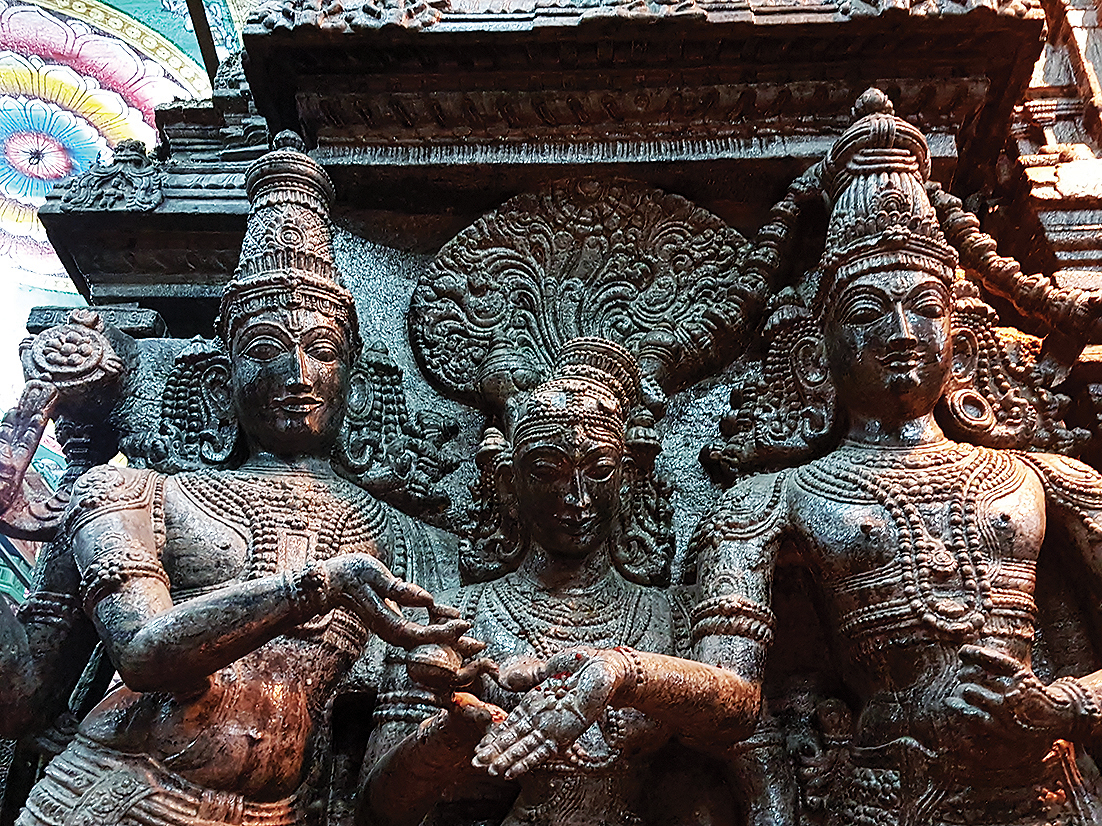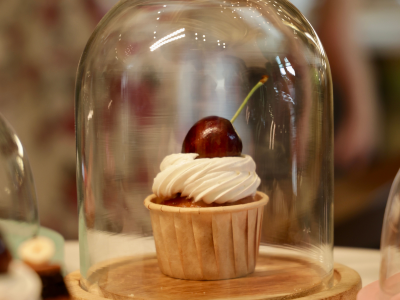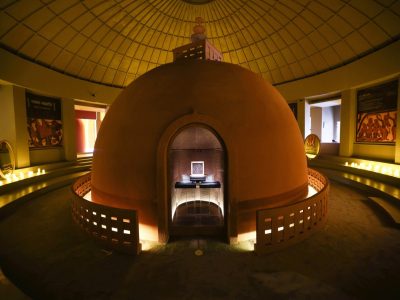The famous temple in Madurai is named after Meenakshi, the goddess of love and fertility – and is debatably the place where Parvati’s heart fell after Vishnu cut her into pieces
Before arriving at Madurai’s famous Meenakshi Amman Temple, I googled for information about it. What I got was a string of articles describing its architecture and beauty. But none could take me to the heart of this architectural marvel.
Heart of the city
Situated in Tamil Nadu, the ancient city of Madurai is built in a lotus form with Meenakshi temple at its centre. When I reached the temple – which is about a kilometre south of the Vaigai river– the first thing I noticed is the entrance gate. There was nothing extravagant about the décor as I expected – and I thought, ‘I travelled all the way from North to South for this?’ But one should never judge a book by its cover.
For inside the gates is an extravaganza spread over 45 acres: 14 gateway towers and around 33,000 sculptures. It’s sheer size is mind-boggling. There are temples devoted to various gods and goddesses under the same roof. I could see that it would be immensely confusing for a tourist accompanied by a guide, as it seems like a maze. Thereby, the services of a local guide were requisitioned.
Capturing through eyes
You can enter from any of the four main gates, each facing one of the cardinal directions. In February 2018, the Madurai bench of Madras High Court prohibited the use of cell phones within the premises of the temple. This ban was the first of its kind in a temple in Tamil Nadu. Initially, I was not pleased with the idea of surrendering my phone. Gradually, I realised how this one act of sacrifice changed my whole viewing experience.
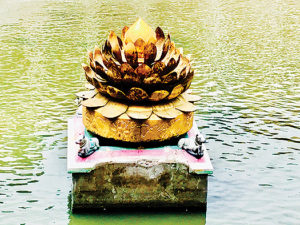
With no camera at hand, I had to capture all those moments in my mind’s eye. I was really into the moment, and that made it a completely different experience, more intense.
According to ancient mythology, the temple is dedicated to Meenakshi (an incarnation of Goddess Parvati). As an answer to the penance of Malayadwaja Pandya, the king of Madurai, she descended on earth. The word ‘Meenakshi’ is a Sanskrit term which means ‘fish-eyed.’ But my guide explained that the name of the goddess means ‘rule of the fish’ – derived from the Tamil words meen (fish) and aatchi (rule).
A crowning glory
There were shops on both sides selling bangles, flowers and sweets. Just a few minutes inside, and I started to marvel at the beauty of the sculptures lining its walls. As you keep walking, you find yourself near a pond known as Porthamarai Kulam or the Golden Lotus Pond. The lotus sculpture inside the pond is golden in colour, thus the name.
The temple is known for its Dravidian architecture, enormous size and soaring gopurams or towers. There are thousands of vibrant and intricate statues carved on its walls – of gods, goddesses and demons. Every 12 years, the temple is repainted and repaired.
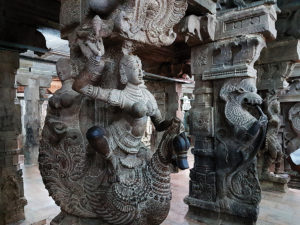
The guide describes how the temple was built at around 600 CE, how it was destroyed by Delhi Sultanate’s Malik Kafur in the 1300s and was rebuilt by after 250 years. Standing tall against the test of time, what was fascinating about the temple was its intricate detailing. It seemed like the artists carved every inch of it with utmost precision.
Symbol of love
Sundareshwara (an incarnation of Lord Shiva) came down to Madurai to marry Meenkashi. Thus, many are of the belief that this temple symbolises ‘love’. Probably this could be the reason why I saw around 30 married women (who came down from a village nearby) – wearing red saris – worshipping the goddess.
“Meenakshi represents love, as well as fertility,” my guide says. Pointing towards a sculpture – which shows Lord Vishnu placing Meenakshi’s hand in Sundareshwara’s – he explains that this is a depiction of their wedding day. The temple, thus, represents the divine union between the two. Also, it is a ritual every evening to carry Sundareshwara to Meenakshi’s silver bedchamber through a procession, and then taken back to its place every morning.
A few steps away, there was another statue engraved on the wall which was covered by a cloth. He told me that this is another form of Meenakshi, worshipped by pregnant women, or those who wish for a child. “Worshipping her might help them deliver a healthy child or conceive one”, he adds. The statue showed the goddess delivering a child.
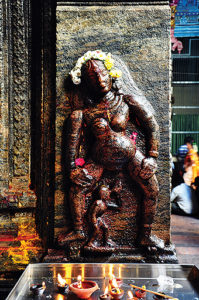
My guide also says that this is one of the Shakti peeths – where Parvati’s heart fell. But this is a theory which can be debated. In the lists of peeths available online, this temple is not mentioned.
Abode of almighty
As we proceed further, he urges us to visit the shrine of Lord Shiva first, as it closes before that of goddess Meenakshi. We join a small queue at the entrance. It was intriguing to find multiple other temples inside the temple. Purohits can be seen at work — the guide says there are about 50 of them taking part in pujas, taking care of the temple and so on.
Tourists were allowed only to take a glimpse of the shrines from afar. There was another temple which had a statue of Lord Nataraja (another incarnation of Shiva) – but it was unique. It was the only one in India where his right leg is raised. In every other statue in India, he has his left leg in a raised position. When I asked my guide the reason behind this, he said that Hindus have a norm that women generally stand on the left side of her husband or partner. But here is an exception: Meenakshi is seen standing on Shiva’s right side.
Before leaving, I gave in to the longing to sit beside the soothing water for a while. One reason was to rest my aching feet, but there was another other reason. Long back at a temple in Rajasthan, after a quick tour, the guide told me, “You must sit for a while when you visit a temple.” When asked why, he said, ‘God will otherwise feel bad. He will think you came to his abode, and just left after taking a tour!’”
How to reach
- From Madurai airport, a taxi can take you to the temple in around 90 minutes.
- From Madurai Junction Railway Station, the temple is only 10 minutes away. You can take a taxi or an autorickshaw to reach the designation.
- Those coming via bus can get down at Mattuthavani bus stand. From there the ride is only 20 minutes.

